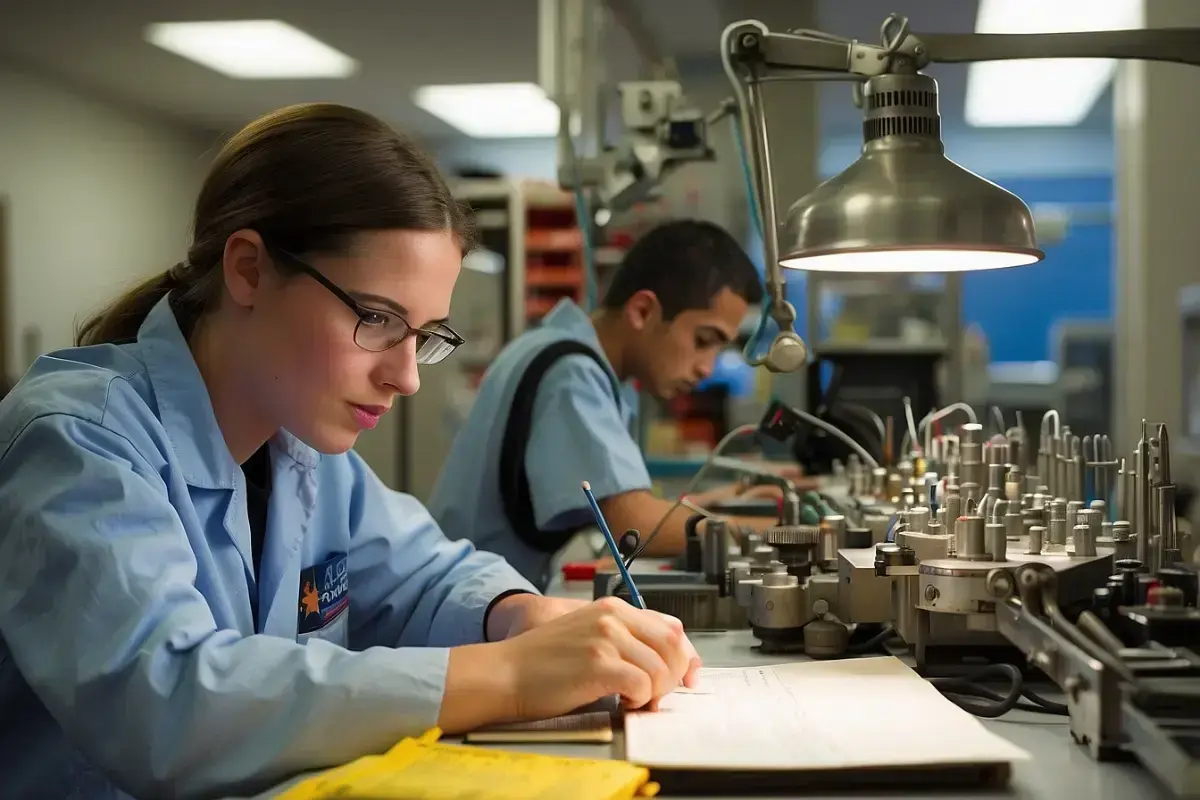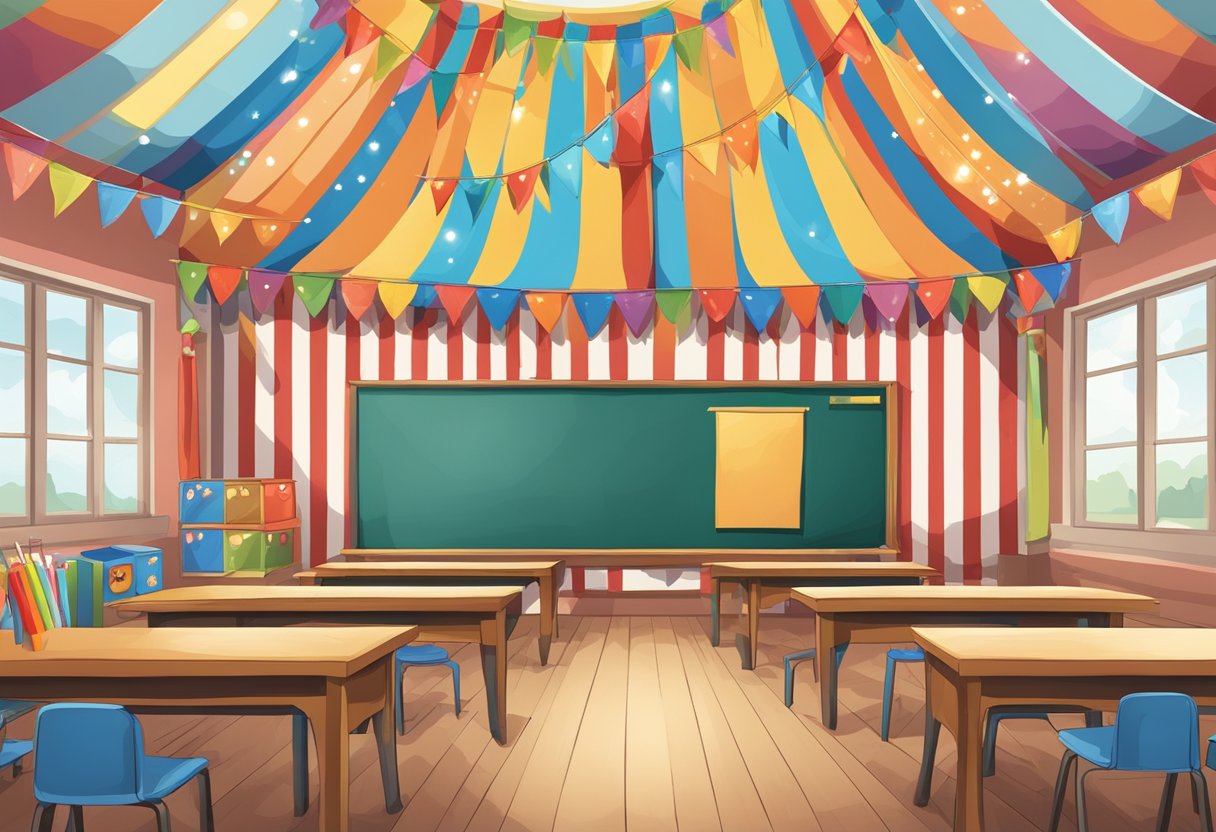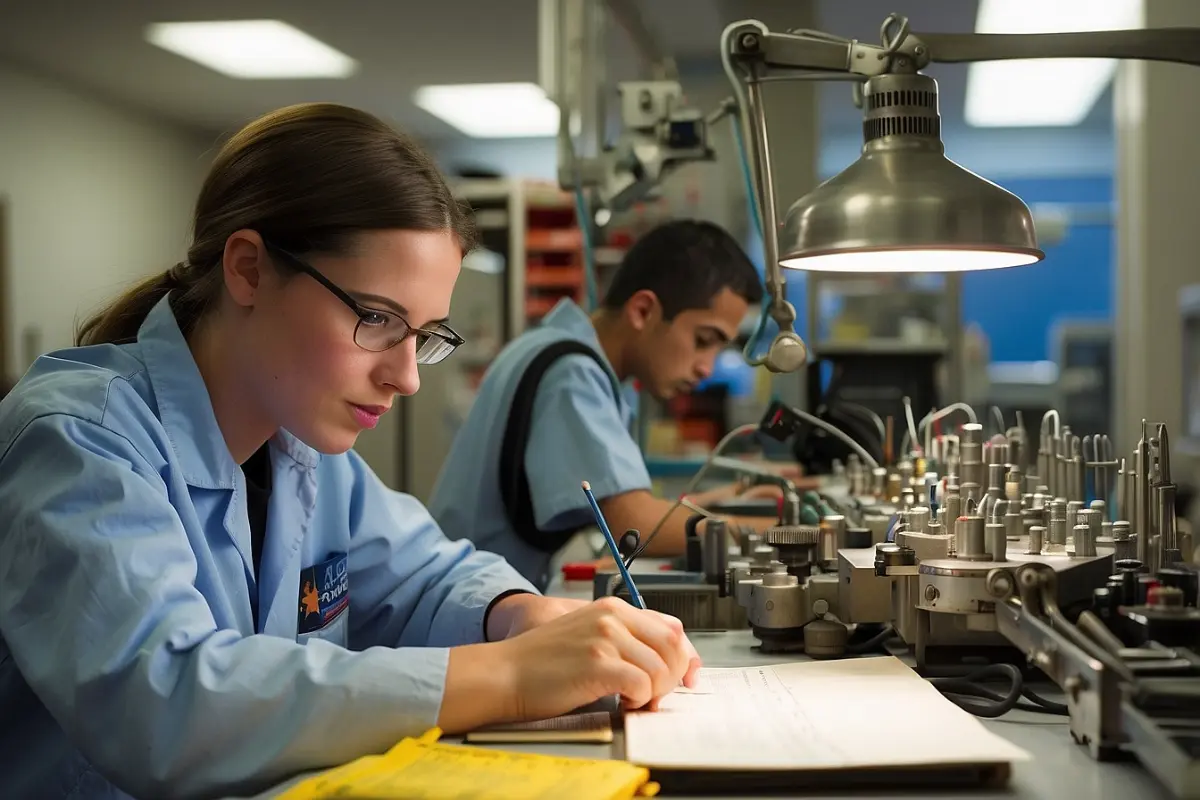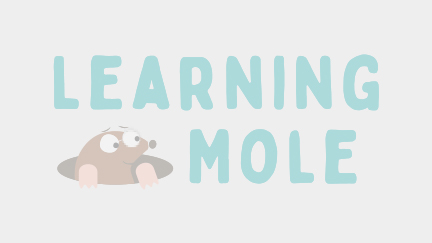
Maths Circus: Juggling Numbers and Solving Circus Mysteries – A Whimsical Approach to Inspiring Mathematics
Table of Contents
Maths Circus, an innovative platform we’ve crafted, presents a captivating realm where children learn mathematics through the exciting theme of a circus. The joy of juggling numbers and solving circus mysteries makes the learning experience incredibly fun and engaging. By blending educational concepts with play, Maths Circus ensures that the development of mathematical skills is both interactive and enjoyable.

We acknowledge the importance of a solid foundation in the learning journey, which is why Maths Circus is designed with progressive activities suited for different skill levels. This approach helps nurture cognitive development and problem-solving abilities in an environment that values fun as much as education. Introducing these principles in the classroom can turn a routine lesson into an adventure, making Maths Circus an excellent tool for educators as well.
Key Takeaways
- Maths Circus intertwines fundamental maths with interactive play to make learning enjoyable.
- Skills progress through engaging activities, enhancing cognitive development and problem-solving.
- The platform is a valuable resource for both classroom and home education, fostering inclusivity.
Getting Started with Maths Circus

Embarking on the Maths Circus adventure requires a basic understanding of how to navigate the interface and ensure your system meets the necessary requirements. This will help guarantee a smooth and enjoyable experience for both teachers and children as they dive into the realm of numbers and engaging puzzles.
Understanding the Interface
When you first launch Maths Circus, you’ll be greeted with a user-friendly interface designed to be intuitive for both educators and young learners. The home screen displays a colourful layout where children can select different challenges, review instructions, and track their progress. As teachers, we’ll find the interface allows us to easily set up individual student profiles, manage tasks, and monitor the development of each child’s mathematical skills. Its straightforward design ensures that no time is wasted on complicated navigation, allowing more time to enjoy the exciting journey through mathematical concepts.
System Requirements
For Windows:
- Operating System: Windows 7 or later
- Processor: 1 GHz or faster
- Memory: 1GB RAM (32-bit) or 2GB RAM (64-bit)
- Storage: 500MB of available disk space
- Graphics: DirectX 9 graphics device with WDDM 1.0 or higher driver
For Mac:
- Operating System: macOS Sierra or later
- Processor: Intel Core 2 Duo or later
- Memory: 2GB RAM or more
- Storage: 500MB of available disk space
- Graphics: Any graphics card that can run macOS Sierra or later
It’s essential for schools and families to check these requirements before installing the software. This ensures that Maths Circus will run smoothly, providing a frustration-free learning environment on your computers. Whether used at home or in the classroom, being prepared with the right system specs means our young learners can focus on what’s important – solving those intriguing maths mysteries.
Mathematical Concepts Explained
In our journey through Maths Circus, we explore how arithmetic operations and geometry fundamentals form the bedrock of mathematical understanding.
Arithmetic Operations
Arithmetic is the cornerstone of maths, involving basic operations that are foundational to more complex concepts. We break down numbers into their smallest units to explore how they interact through these operations.
- Addition (+): The simplest arithmetic operation, where we combine two or more numbers to find their total or sum. For instance, when we add 3 and 4, we get 7.
- Subtraction (−): This operation involves taking away one number from another to find the difference. If we have a total of 7 and we subtract 4, we’re left with 3.
These operations help us quantify and manipulate numerical data, providing the necessary skills to solve everyday problems.
Geometry Fundamentals
Geometry delves into the properties and relations of points, lines, angles, and shapes. It’s about understanding the space around us and how we can map it out.
- Shapes and Colours: In a circus, different shapes and their colours play a significant role. We visualise this through shapes like triangles for tents or circles for rings, each with a distinct colour to represent it.
- Angles: These are formed where two lines meet and are measured in degrees. Understanding angles helps us comprehend the underlying geometry of circus structures or the trajectories of jugglers’ balls.
By grasping these two subsections, we build a firm foundation in basic maths, paving the way towards solving larger mathematical mysteries with ease and confidence.
Interactive Learning through Play

In the realm of educational enrichment, we recognise the power of interactive learning through play. Not only does this approach make education more engaging for children, but it also reinforces cognitive skills in a dynamic and memorable way.
Incorporating Games
Games in the classroom have transformed how we approach teaching. We integrate various activities designed to make learning fun and interactive. For instance, a maths circus can turn a routine maths lesson into an exciting array of games. Children might find themselves playing the role of a juggler, where juggling balls are used to teach principles of addition and subtraction. This hands-on experience resonates with young learners, allowing them to visualise and solve mathematical problems in a playful context.
| Maths Topic | Game Activity | Skills Practised |
|---|---|---|
| Addition | Ball Toss | Quick counting, addition |
| Geometry | Hula Hoop Shapes | Recognising shapes, spatial awareness |
| Fractions | Pie Sharing | Understanding portions, division |
Role of Puzzles
Puzzles and problem-solving tasks are pivotal in the interactive learning experience. They encourage students to apply logic and reasoning to overcome challenges, akin to solving a circus mystery. As teachers, we orchestrate such puzzle-based activities to captivate our pupils’ imaginations while they tackle complex ideas. A puzzle might require students to arrange number tiles in a specific pattern, promoting strategic thinking and ensuring that learning is absorbed more profoundly.
- Logic Puzzles: Develop reasoning and deduction.
- Crossword Puzzles: Enhance vocabulary and spelling.
- Numerical Puzzles: Strengthen mathematical understanding.
By blending educational content with amusement, we craft an environment where learning through play becomes a natural conduit for knowledge; a place where every child can discover the joy of learning without even realising they’re in the middle of a maths lesson.
Advancing Skills with Maths Circus Activities
Engaging with Maths Circus activities enriches our understanding of mathematics through various levels of challenging games and exercises. As we explore these circus-themed challenges, we focus on key mathematical operations including addition, subtraction, multiplication, and counting.
Levels of Difficulty
Maths Circus presents a tiered system of difficulty that progressively enhances our cognitive skills. We begin with basic counting and simple tasks designed to build foundational numeracy confidence. As we advance, the complexity of challenges increases, introducing addition and subtraction problems that require greater concentration and problem-solving abilities. The more demanding stages incorporate multiplication, compelling us to apply mathematical knowledge and quick reflexes to achieve high scores and unlock new, exciting levels.
Enhancing Numeracy Skills
Through the playful context of the circus, Maths Circus activities strengthen our numeracy skills. We use counting games to sharpen our ability to recognize numbers and patterns. Addition and subtraction activities improve our mental arithmetic, enabling us to calculate sums and differences more efficiently. As we progress, multiplication exercises bolster our aptitude for more complex mathematical operations, essential for everyday problem solving. This hands-on approach cultivates a practical and enjoyable learning experience that sticks with us.
Maths Circus in the Classroom

We understand that integrating the excitement of a maths circus into the educational curriculum can be a transformative experience for both students and teachers. Through an engaging mix of juggling numbers and solving circus mysteries, we have the chance to make maths come alive in the classroom.
Curriculum Integration
In our approach to integrating the Maths Circus into the classroom curriculum, we focus on providing structured activities that align with key educational objectives. Our resources include specially designed worksheets that challenge students to apply mathematical concepts in the context of circus-themed problems. This approach not only captures their imagination but also caters to diverse learning needs, including support for pupils with special needs. By using the engaging theme of the circus, we’re able to weave in elements of number theory, sequencing, and spatial awareness.
Resources for Teachers
At LearningMole, we equip teachers with a trove of resources to bring the Maths Circus to life. Our Educational Content includes:
- Interactive tutorials: These help simplify complex mathematical concepts by using circus imagery and metaphors.
- Activity sheets: Designed to engage students while emphasising key maths skills through circus-related challenges.
- Support strategies: Tailored content including methodologies for pupils with special needs, ensuring accessibility for all learners.
It is our goal to provide a comprehensive suite of materials that empower educators to transform their maths lessons into a captivating educational circus, enriched with the thrills of learning and discovery.
Cognitive Development and Problem Solving
In our journey through the Maths Circus, we’ve observed that juggling numbers is more than just a game; it’s an exercise in cognitive development and problem solving. Let’s explore how reasoning and planning, along with strategic thinking, contribute to solving these fascinating circus mysteries.
Reasoning and Planning
When we encounter a numerical puzzle, we first assess the situation by engaging in deductive and inductive reasoning. Deductive reasoning allows us to apply general rules to specific problems, leading us to a logical solution. Inductive reasoning, on the other hand, involves observing patterns and making generalisations that help us in the planning stage. We need a clear plan that defines the sequence of moves to achieve our goals, reminiscent of the way a juggler anticipates the path of the balls in the air.
Strategic Thinking
Strategic thinking is integral to tackling the challenges within the Maths Circus. It involves not only recognising patterns and sequences but also anticipating future issues and proactively formulating strategies to address them. Much like a chess player, we consider multiple moves ahead, always aware of potential outcomes and their impact on the overall problem at hand.
Beyond Numbers: Exploring Physics and Space

In our exploration of Maths Circus, we delve into the wonders of mathematics and its applications in a physics context, paying special attention to motion and three-dimensional space. This journey brings us face-to-face with crucial concepts such as speed, trajectories, and vectors.
Understanding Motion
Motion, a fundamental aspect of physics, allows us to examine how objects travel through space over time. Speed, the rate at which something moves, is a scalar quantity representing the distance travelled per unit time. When we consider the direction of movement, speed evolves into velocity, which is a vector quantity. An example of motion we often encounter is the swinging of pendulums. The predictable patterns of pendulums have become a classic study in physics, illustrating the intricate dance between gravitational forces and momentum.
- Speed: Distance travelled / Time taken
- Velocity: Speed in a specific direction
Exploring Three-Dimensional Space
Our adventures also take us into the realm of three-dimensional geometry, where we visualise and solve problems in 3D space. Vectors become invaluable tools at this stage, as they give us the precision to define positions and directions. They are the mathematical representations of quantities having both magnitude and direction — crucial for interpreting the trajectories of moving objects, such as circus performers or planets orbiting in space.
- Vectors: (Magnitude, Direction)
- Trajectories: Paths taken by objects in motion
Through our explorations at Maths Circus, we uncover the fascinating connections between numbers and the physical world, showcasing the power of mathematics as the language of the universe.
Creative and Engaging Challenges

In Maths Circus, we take a playful approach to learning by weaving together the thrill of circus acts with the rigour of mathematical thinking. This innovative method offers an educational experience that is not only engaging but also steeped in entertainment value.
Circus Acts as Learning Tool
Circus acts, with their vibrant displays and intricate performances, serve as a fantastic vessel for learning. We utilise these acts as metaphors for mathematical concepts, transforming the abstract into tangible challenges. For example, when our learners tackle juggling numbers, they aren’t just rehearsing arithmetic; they’re learning about sequence, pattern recognition, and problem-solving. This fusion of entertainment and education not only holds their attention but enhances their understanding through visual and physical representation.
Progression and Rewards
Our learning journey is designed to mirror the progression of a real circus performer, from novice to expert. Learners start with simple tasks and, as they master each new concept, move on to more complex challenges, just as a performer would learn increasingly difficult routines. To motivate and acknowledge their achievements, we’ve incorporated a system of rewards – virtual badges and certificates – that celebrate the milestones they reach. This not only fuels their engagement and keeps them eager to learn more but also instills a sense of pride and accomplishment that is crucial for sustained learning.
Accessibility and Inclusivity Features

We understand that embracing diversity means providing accessible learning opportunities for all. That’s why we’ve included specific features in Maths Circus to cater to a broad range of needs, ensuring that every child, regardless of their abilities, can enjoy and benefit from this interactive learning experience.
Adjusting for Special Needs
Maths Circus is designed with various accessibility options to support children with disabilities and special needs. By adjusting settings such as display contrast, text size and audio feedback, we make it easier for these children to engage with the content. Our platform has been programmed to be compatible with assistive technologies, ensuring that learning is not hindered by physical or cognitive challenges.
Customisable Experience
For a truly bespoke learning journey, Maths Circus offers customisable experiences that allow educators to tailor lessons to the needs and abilities of each child. A site licence for educational institutions enables us to provide a consistent learning environment across different users, while also allowing individual modifications. This way, each child can progress at their own pace, with programming that fosters a supportive and empowering learning space.
Expanding the Experience with Sequels

Following the success of the original Maths Circus, we’ve introduced sequels to further engage students in mathematical challenges. With each subsequent release, we continue to reinforce key concepts through increasingly complex puzzles.
Maths Circus Act 3
In Maths Circus Act 3, we raise the bar by incorporating new mathematical concepts that compel students to utilise both logic and arithmetic skills. It’s our way of reinforcing their existing knowledge base while gradually introducing more advanced topics. This sequel not only builds on what learners mastered in previous instalments but also brings in fresh elements to keep their interest piqued.
Maths Circus Act 4
As for Maths Circus Act 4, this sequel takes learners on an even more intricate adventure of number juggling and problem-solving. We have made sure that the puzzles are crafted to reinforce the learners’ mathematical abilities and to challenge them in new ways. This ensures that each level of the game continues to be as educational as it is entertaining.
Parent and Teacher Guides

We are thrilled to share the key components of our Parent and Teacher Guides which focus on maximising the use of the Maths Circus: Juggling Numbers and Solving Circus Mysteries. These guides are designed to help you effectively navigate the educational experience and enable your learners to enjoy and excel in their mathematical journey.
Utilising the Manual
The manual included with Maths Circus is a crucial resource for both parents and teachers. It offers detailed instructions on how to incorporate the programme into learning curriculums and home education. By adhering to the step-by-step guidance in the manual, educators can ensure that each session is informative, engaging, and aligned with the programme’s educational goals.
Printable Materials
Alongside the digital resources, we provide printable materials which serve as invaluable tools for reinforcing lessons and concepts. These worksheets and activities can be distributed to students by educators holding a site licence, allowing for uniformity and consistency in lesson delivery across different learning environments. Our printable materials are perfect for hands-on practice, homework assignments, or as supplementary resources during lessons.
Frequently Asked Questions

We’ve gathered some of the most common queries about Maths Circus and put together this handy section to answer those questions.
How can one access Maths Circus and practice juggling numbers?
You can experience the thrill of combining mathematics and circus fun through various educational platforms that host the Maths Circus game. It allows you to practice juggling numbers in a playful and engaging manner.
Is there a way to download the Maths Circus game?
Yes, there are versions of Maths Circus available for download. You’ll find them on dedicated educational software websites, where you can purchase and download the game to your device.
What are some effective strategies for problem-solving in Maths Circus?
Effective strategies include breaking down problems into smaller parts, practicing consistently to improve numerical skills, and applying logical thinking to tackle the game’s challenges.
Can Maths Circus be played for free, and if so, where?
Maths Circus may be playable for free during trial periods or on websites offering a limited version of the educational games. However, for the full experience, purchasing the game may be required.
Are there solutions available for the puzzles in Maths Circus?
While some solutions to the puzzles can be found through discussion forums or educational resources, the game encourages players to find solutions on their own to enhance learning and problem-solving skills.
What educational benefits does Maths Circus offer to learners?
Maths Circus offers a host of educational benefits, including improved numeracy skills, enhanced logical reasoning, and the development of strategic thinking through its fun, circus-themed puzzles and challenges.


Leave a Reply